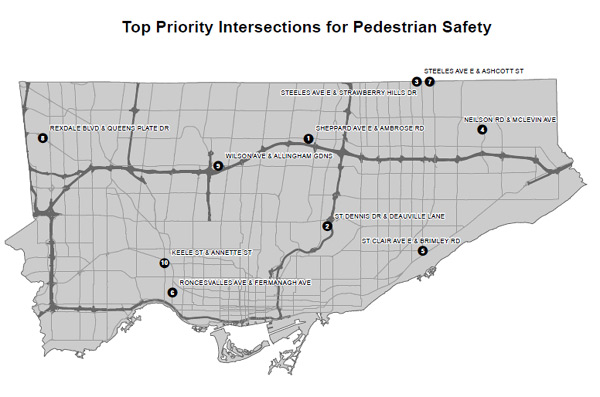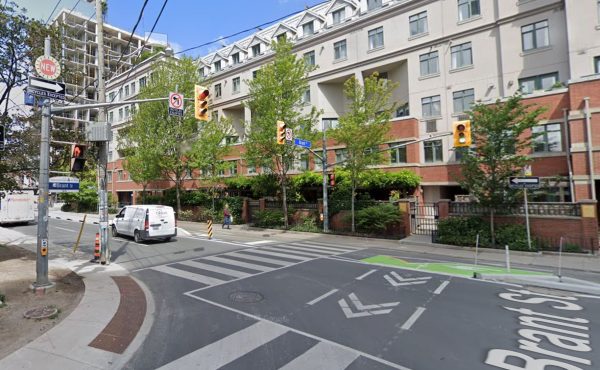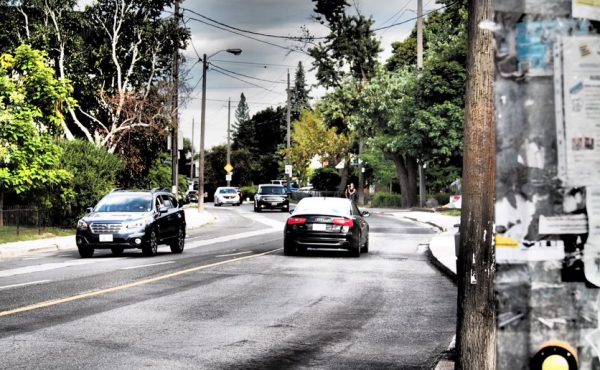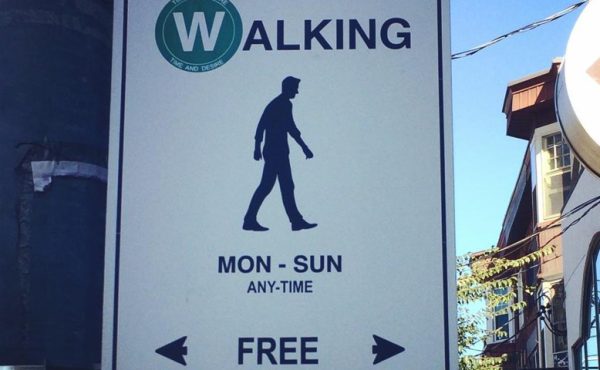Tomorrow, Toronto’s Public Works and Infrastructure Committee will look at a report from City staff that identifies the 100 worst intersections in Toronto and proposes quick-win measures to improve the worst 10 (full report here (PDF)).
The report is a response to a Global news story from 2011 that looked at the 100 most dangerous intersections for pedestrians by looking not at the pure volume of collisions, but at the proportion of pedestrians who were hit by vehicles. That way, it identified locations where something about the intersection design itself was causing problems, rather than just places where there were lots of pedestrians.
The City chose to use a blended methodology that takes both volume and proportion into consideration, and ended up with a different list. Some of the basic findings are similar, however — most of the intersections are in suburban areas, and many of them are places where most or all cars are turning rather than going straight.
In fact, 47% of pedestrian collisions in the worst 10 intersections were vehicles turning left into pedestrians crossing with the right-of-way (compared to 39% for all intersections). Overall, at least 70% of the pedestrians hit were crossing with the right-of-way.
The report looks closely only at the worst 10 intersections, where it proposes implementing some quick-win solutions that don’t need expensive reconstruction. These include better road markings and zebra stripes, better signage, and giving pedestrians more time to cross.
Two ideas stand out as potential improvements to city policies:
- Making the pedestrian signal always change along with the green light. Some of the worst intersections have what is called “Semi-Actuated “Type 2” (SA2)” signals, which means that the light can turn green but the pedestrian signal stays red unless you’ve pushed the button. This causes confusion and often means pedestrians hesitate, then cross when they don’t have enough time. The City uses these far too much – they should only be used on rare occasions.
- Wider use of “Leading Pedestrian Intervals” (LPI), where the pedestrian signal changes to “walk” a few seconds before the traffic light turns green. This gives pedestrians time to get out into the crosswalk, becoming more visible to cars and also clearing the intersection faster. It’s particularly valuable in reducing left-turn conflicts, which as we’ve seen are the biggest problem. LPIs are not useful everywhere, but they make a difference specifically at T-junctions — where all vehicles are turning — which both reports found were disproportionately represented in the worst intersections.
The report proposes to extend the findings from the worst 10 intersections to provide simple improvements for the next 90. It also proposes to integrate a pedestrian safety audit into all intersection reconstructions, which could make a big difference over time to pedestrian safety. As always with the City of Toronto, the question will be whether these good intentions are in fact implemented over time.
We often focus on people’s behaviour (as drivers and pedestrians) as a cause of collisions, but the report shows that the underlying infrastructure can also have an impact. People respond to the cues from their environment, and a badly designed intersection creates more accidents. It took a news media report to prompt them, but it’s good to see the City take a look at how to improve the most dangerous intersections for pedestrians.





4 comments
Nice to know this is happening; though short notice. Hope you can make some points – and that the PWIC-heads will listen as often it’s been 4-2, 4-2, 4-2 etc. ad nauseum.
One quick action – inspired by seeing fresh paint at Bloor/Spadina – the stop bars and crosswalk lines need to be repainted in the springtimes, and also in the fall. We don’t seem to renew these markings perhaps because of cost, but it’s not the pedestrian and bike traffic that is wearing them out, it’s the car and trucks. So when the majority of the Council gave back the $60M of Vehicle Registration Tax, are those c. 37 completely OK with the increased risks from that “no money” argument that likely lies behind inaction?
There can be incompetence too – still no crosswalk lines across the mouth of the Sterling and Dundas intersection where Ms. Morrison was killed. When the City came and quickly painted out citizen responses to the bad intersection design, admitted to by Cnclr Minnan-Wong at the Works Cttee once, they couldn’t be bothered to paint in a single pair of white lines, and they still haven’t though most other intersections have these lines on them along Dundas and College.
A second quicker fix to reduce carnage: lower the speed limits! Is that in the report? And as I expect not, perhaps if Dylan is kind enough to depute, maybe this can be said, though expect vilification for pointing out laws of physics.
I agree that the “no walk signal unless you press the button” is implemented poorly. One thing that is obvious is that if the detection loop indicates that there are cars still passing from the side street, the light for the cars is extended. However, if you miss pressing the pedestrian crossing button by a milllisecond before the light turns green for the side street, you’ll have to wait through the entire cycle. Why are lights held for motorists (even if the detection loop is falsely detecting cars), but the pedestrian signal can’t be activated on the current green?
The whole flashing countdown don’t walk on main streets, which then clears if there are no cars/pedestrians waiting to cross the other way, is another nuisance. Vehicles don’t have to stop, they get a green all the while. Pedestrians risk being ticketed if they attempt to cross. Even very narrow side streets.
The loops in the roadway allow automobiles (and bicycles if they position their bikes over them) to activate the traffic signals, passively. Pedestrians, however, have to actively press a button to activate their signals.
Why can’t we have some sort of passive activation for pedestrians? Pads to stand on, motion detectors, heat detectors, something so just a pedestrian being there would activate them.
Of course, large animals such as dogs or raccoons may activate them as well, but dogs being colour blind they just ignore the coloured lights anyway. Don’t know about the raccoons.
I hate those intersections where you have to press the button to get the pedestrian signal while cars going in the same direction get the green light. At most I’ve encountered, you have to wait another full light cycle to cross. The worst example I found was at the top of Clifton Hill in Niagara Falls. Pushing a button to cross a standard intersection seemed to confuse most tourists, and most people crossed against the pedestrian signal. Many tourists would not have understood the written signs explaining what to do to cross. It seemed very provincial.